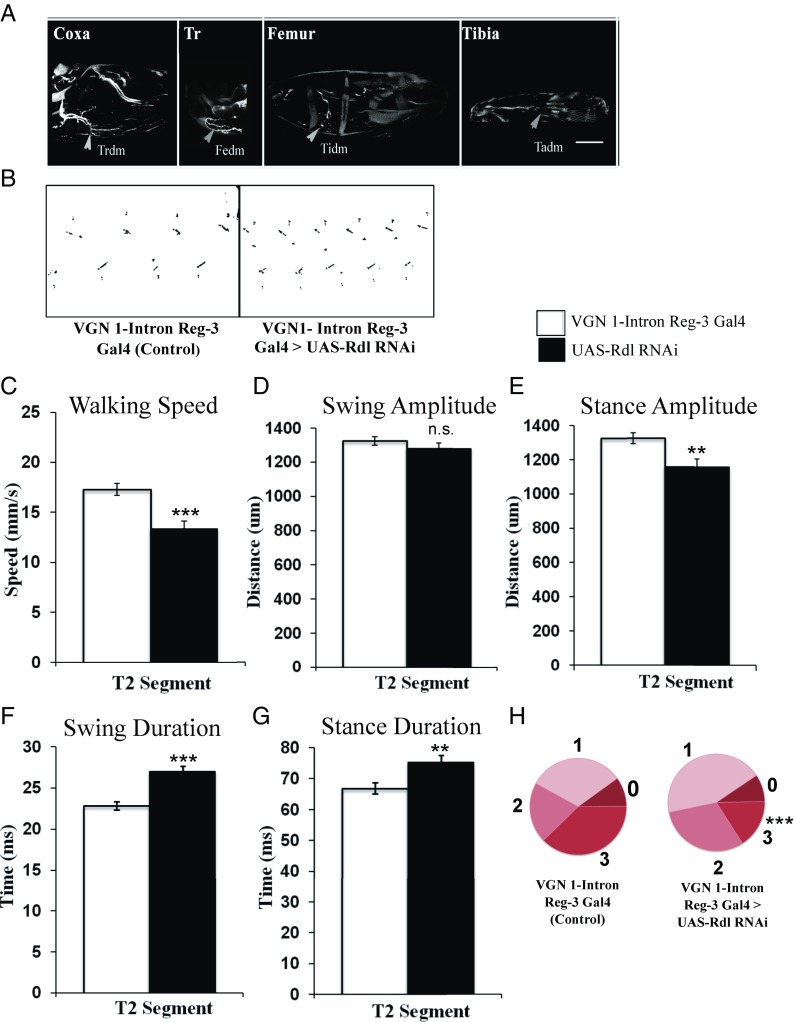Fig. 6.
Subset-specific knockdown of Rdl in leg motoneurons results in deficits in walking behavior. (A) Innervation patterns of leg motoneurons labeled by VGN 1-Intron Reg-3GAL4 driving UAS-GFP. (Scale bar: 50 µm.) Motoneuron axons innervating most of the depressor muscles (fedm, femur depressor muscle; tadm, tarsal depressor muscle; tidm, tibia depressor muscle; trdm, trochanter depressor muscle) are GFP labeled. (B) Motoneuron subset-specific Rdl receptor knockdown results in shortened step lengths as shown in the soot prints. (C) Rdl knockdown in subsets of leg motoneurons results in reduced walking speed. In this and all subsequent figures, the left bar indicates control and the right bar indicates knockdown. (D and E) Rdl knockdown in subsets of leg motoneurons results in decreased stance amplitude; swing amplitude is not affected. (F and G) Rdl knockdown in subsets of leg motoneurons results in longer swing duration and stance duration. (H) Concurrency state 3 is significantly reduced in Rdl receptor knockdown flies. Left circle, control; right circle, knockdown. Controls (VGN 1-Intron Reg-3 GAL4 > UASmCD8GFP) n = 48; experiment (VGN 1-Intron Reg-3 GAL4 > Dicer2; +; UAS-Rdl RNAi) n = 45. n.s., not significant. Quantitative analysis for the entire bar plots was performed using Student’s t test. All of the bar represents mean ± SEM (**P ≤ 0.01; ***P ≤ 0.001). Quantitative analysis for the pie chart was performed using two-way repeated measures (RM)-ANOVA and showed a significant difference in the concurrency state 3 of subset-specific Rdl knockdown flies, F(3, 270) = 133.4, P < 0.001. Post hoc testing using Sidak multicomparison test showed significant difference in concurrency state 3 of subset-specific Rdl receptor knockdown flies compared with Vgn1Intron Reg-3 Gal4 control flies (***P < 0.001).

